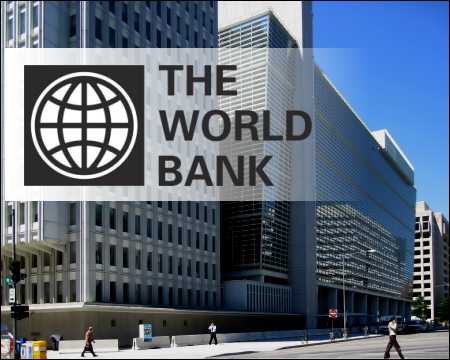The World Bank has projected that Nigeria would record a 2.9% real GDP growth in 2023 after growing by 3.1% last year as it revised its 2023 global economy’s growth forecast to 1.7% down from the 3.0% growth projection it earlier made.
Specifically, the Washington D.C- based development finance institution, in its latest ‘Global Economic Prospects’ report published on Tuesday, hinged its outlook for Nigeria in fiscal 2023 on the continued weakening performance of the nation’s oil sector despite a slight improvement in the growth of the non-oil sector.
The Breton Woods institution expressed concerns about Nigeria’s debt sustainability and deteriorating investor sentiment which are increasing borrowing costs while it linked its global outlook projection to the impact of central banks’ rate hikes intensification as the Russia-Ukraine war continues amid world’s major economies’ declining performance.
On the public finance front, it predicted that the Nigerian government’s fiscal position was expected to remain weak due to high borrowing costs, lower energy prices, sluggish growth of oil production, and subdued activity in the non-oil sectors.
The bank reported that it expected global GDP growth of 1.7% in 2023, the slowest pace outside the 2009 and 2020 recessions since 1993.
It would be recalled that the bank had, in its previous Global Economic Prospects report in June 2022, forecast 2023 global growth at 3.0% and projected that in 2024, the growth will to pick up to 2.7%, below the 2.9% estimate for 2022.
It estimated then that average growth for the 2020-2024 period would be under 2%, the slowest five-year pace since 1960.
The bank, in a statement on its latest report expressed concern that major slowdowns in advanced economies, including sharp cuts to its forecast to 0.5% for both the United States and the euro zone, could foreshadow a new global recession less than three years after the last one.
It stated: “Given fragile economic conditions, any new adverse development – such as higher-than-expected inflation, abrupt rises in interest rates to contain it, a resurgence of the Covid-19 pandemic or escalating geopolitical tensions — could push the global economy into recession.”
According to the development finance lender, the bleak outlook will be especially hard on emerging market and developing economies as they continue to grapple with heavy debt burdens, weak currencies and income growth, and slowing business investment that is now forecast at a 3.5% annual growth rate over the next two years — less than half the pace of the past two decades.
The World Bank President, David Malpass, was quoted in a statement as saying: “Weakness in growth and business investment will compound the already devastating reversals in education, health, poverty and infrastructure and the increasing demands from climate change.”
On fiscal and monetary measures needed to mitigate the worrisome outlook, the bank called for increased support from the international community to help low-income countries deal with food and energy shocks, people displaced by conflicts, and a growing risk of debt crises.
The report further reflected China’s growth in 2022 slumped to 2.7%, its second slowest pace since the mid-1970s after 2020, as zero-Covid restrictions, property market turmoil and drought hit consumption, production and investment.
The World Bank predicted a rebound to 4.3% for 2023, but that is 0.9 percentage point below the June forecast due to the severity of Covid disruptions and weakening external demand.
Also, it noted that some inflationary pressures started to abate as 2022 drew to a close, with lower energy and commodity prices, but warned that risks of new supply disruptions were high, and elevated core inflation may persist. This could cause central banks to respond by raising policy rates by more than currently expected, worsening the global slowdown.
To sustain growth in global economies, the Breton Woods institution canvassed the need for increased support from the international community to help low-income countries deal with food and energy shocks, people displaced by conflicts, and a growing risk of debt crises.
It further stressed that new concessional financing and grants were needed along with the leveraging of private capital and domestic resources to help boost investment in climate adaptation, human capital and health.
On regional economic outlooks for 2023, the World Bank predicted that East Asia and Pacific’s growth was expected to increase to 4.3% in 2023 and to 4.9% in 2024; Europe and Central Asia to slow to 0.1% in 2023 before increasing to 2.8% in 2024 while it forecasts that Latin America and the Caribbean’s growth will slow to 1.3% in 2023 before recovering to 2.4% in 2024.
According to the report, Middle East and North Africa’s growth is expected to slow to 3.5% in 2023 and 2.7% in 2024; South Asia’s growth is projected to slow to 5.5% in 2023 before picking up to 5.8% in 2024 while Sub-Saharan Africa’s growth is expected to be at 3.6% in 2023 and rise to 3.9% in 2024.






